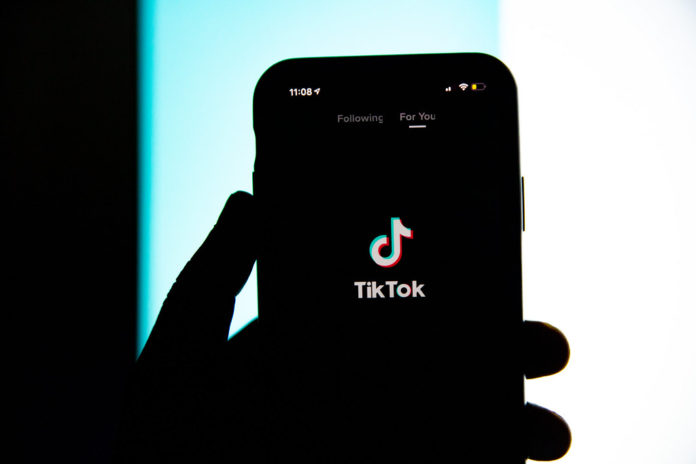
We are obsessed with getting likes on social media. We post carefully, making sure that our content and captions will guarantee the most likes. Every major social media platform has a like button, a number that defines your popularity and conditions your rise to potential fame. Now, enter TikTok.
The younger generation soaks up TikTok trends like a sponge; they participate in humorous videos for a variety of reasons, but the primary reason is popularity — funny and unexpected videos have a better chance of becoming popular.
Recently, seemingly straight male TikTok stars are creating videos that could be interpreted as homoerotic, like going in for a kiss, for views and humor. However, feigning homosexuality to attain virality both undermines the difficulties of coming out and abuses queerness as a popularity-seeking tool. Seventeen-year-old British TikTok star Connor Robinson, who has posted multiple sexually suggestive videos, is an example. A video of him and his friend grinding against each other now has over 15.1 million views. Though he and his friend identify as heterosexual, many influencers like him have discovered that implying queerness in their videos appeals to more female viewers and generates traffic. Similarly, users Vu Nguyen and Ben created a TikTok series that features Nguyen trying various couple activities with Ben. It was a cute “gay couple reveal” until it became clear that neither were gay and that it was fake. This is a fetishization of queerness; falsifying queer relationships should not be used to seek attention.
It doesn’t stop there. Some TikTok stars, like Olivia Ponton and Ivan Martinez, have also produced fake coming-out videos as April Fools’ Day pranks without realizing the ramifications of their actions. Lip-syncing to will.i.am’s “Boys & Girls” while coming out as queer, as some LGBTQ+ users have done, is not a fad straight people can co-opt. Revealing one’s sexual identity to the world takes courage, and these videos trivialize that difficulty. These viral videos not only are a form of queerbaiting, whereby people pretend to be queer for attention, but also are invalidating LGBTQ+ experiences. Identifying as LGBTQ+ is not a gateway to fame or a simple joke. It’s not a train for straight people to hop on and off as they please.
Using queerbaiting as a tactic to expand viewership and as proof of LGBTQ+ representation in the media is attention-grabbing and of no substance. But while the commodification of gay culture should be condemned, it is not as black and white as people may think. The fluidity within the LGBTQ+ spectrum, the modern aversion to labels and the freedom of expression of sexuality complicates the impact of queerbaiting. The “homiesexual” trend highlights the decreasing toxic masculinity that we see on social media; we are less focused on labelling certain stereotypes or expressions of sexuality, but rather embracing the ambiguity of it all.
The 80s and 90s saw a trend of homohysteria, or the fear of being perceived as gay. It significantly impacted behaviors of heterosexual males, who would do anything to avoid the stigma of homosexuality.
Another similar phenomenon is the phrase “no homo.” Defined by Urban Dictionary as a “phrase said after saying something that could be interpreted as homosexual to someone of the same gender as the speaker,” it implies that being gay is socially unacceptable. Yet while researching the use of the phrase, University of Oregon sociologist C. J. Pascoe found in 2019 that the phrase had been tweeted more than 14 million times since 2012. A majority of the tweets did not actually express any negative feelings toward the gay community, but conveyed affection and acceptance. Though this phrase is not always used positively, it nevertheless protects men against a society that has decided that they must fear peer affirmation and supportive emotions.
Rising support for homosexuality is disrupting that norm. Men have long contended with a cultural taboo on showing affection; they have been taught to be stoic and repress their emotions. But now, teenagers are rebelling against this with a TikTok trend: #homiesexual. The embracing of ‘softer’ manliness is a rebellion against “the anti-gay, anti-feminine model attributed to the youth cultures of previous generations,” said Eric Anderson, a professor of sport, masculinities and sexualities at the University of Winchester in England.
The new “homiesexual” trend is “less about gayness” and more of a “paradigm shift of some sort for an evolving form of masculinity that is no longer ashamed to show affection,” according to social media forecaster Steven Dam. High schoolers and millennials today are supporting the fluidity of sexuality and emotional expression.
While redefining heterosexuality, as well as accepting and normalizing fluid sexuality warrant praise, these cannot remain mere side effects of popularity-seeking behavior on social media.
Coming out and identifying as part of the LGBTQ+ community can be a long and profound process. It is about learning to accept oneself despite the backlash they may face. Straight men who partake in the homiesexual trend for views and likes never have to deal with that. They can back out of the trend or stop posting sexually suggestive videos whenever they want. The LGBTQ+ community has no such option. They cannot step in and out of the gay shell freely. Their sexuality is not a shallow fad.
While we should actively dismantle notions of toxic masculinity and homohysteria, we must recognize the LGBTQ+ community’s struggles as well. The homiesexual trend is a meaningful social movement, but the intention to change long-standing gender norms needs to expand beyond desperation to be the next Charli D’Amelio. The LGBTQ+ experience is not a springboard.
Sophia Ling (24C) is from Carmel, Indiana.








